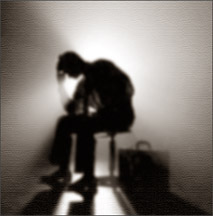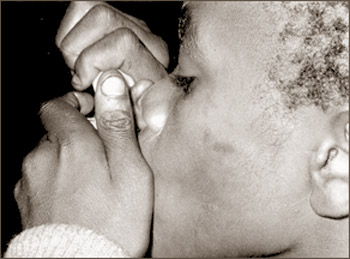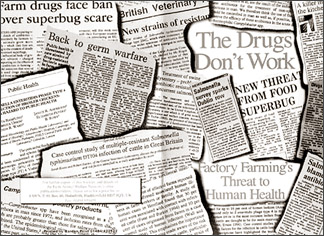Drug abuse on the rise
How to combat drug abuse?:
by Indeewara Thilakarathne
 There is no other social bane that hampers the future of the nation
more than drug abuse as it adversely affects the most productive segment
of the economy. Most of the drug addicts happened to be in the age group
of 14-30 and the social cost incurred in terms of rehabilitation and
re-integration of them into production process is very high. There is no other social bane that hampers the future of the nation
more than drug abuse as it adversely affects the most productive segment
of the economy. Most of the drug addicts happened to be in the age group
of 14-30 and the social cost incurred in terms of rehabilitation and
re-integration of them into production process is very high.
Although the legal net has been tightened up with regard to the
possession, consumption and trafficking of drugs, little has it helped
in containing and combating drug abuse. Hard drugs such as heroin,
hashish and locally produced cannabis are readily available in the
market thanks largely to the well-organised network of distribution and
a lukewarm attitude on the part of the law-enforcing agencies to combat
the menace.
By 2004, total number of cases of drug related arrests was 22,337 and
more than half of them were in their twenties and the man to woman ratio
was 46:1. Fifty three percent of the total arrests were for consumption
of heroin, 47% for cannabis. However, by now, the figure would have
increased by several fold given the recent wave of new entrants to the
community of ever increasing drug addicts.
Metropolitan Colombo was worst affected by the phenomenal increase in
consumption of drugs though the percentage has not been formerly
recorded. It has been estimated that the consumption of locally produced
drug cannabis has increased.
Cannabis is mainly produced in dry zones in the Eastern and Southern
provinces and would be trafficked by public transport in small
quantities. Currently, the estimated land under cannabis cultivation is
500 hectares. It has been observed that consumption of potent variety of
cannabis with more flowering tops was increased and preferred among
young drug addicts.
Highest number of cannabis related arrests were made in Colombo
(36%), Gampaha and Galle. The Police Narcotic Bureau (PNB) seized the
largest haul of narcotics and large quantities of narcotics were seized
in Monaragala and Ratnapura Districts. The estimated cannabis users in
the country were in the region of 600,000 and the quantity of cannabis
seized island wide was 36,845 Kg with 10,485 cases.
 Although cannabis has now been abused, under Ayurvedic medicine, it
has been used for medical preparation and as a pain killer for ages. In
1994, 384 Kg of cannabis was used by Ayurveda for medical purposes.
Ayurveda Drug Corporation consumed 64Kg mainly to produce Buddharaja
Kalkaya and Kameshwara Rasayanaya or popularly known as Modaka. Although cannabis has now been abused, under Ayurvedic medicine, it
has been used for medical preparation and as a pain killer for ages. In
1994, 384 Kg of cannabis was used by Ayurveda for medical purposes.
Ayurveda Drug Corporation consumed 64Kg mainly to produce Buddharaja
Kalkaya and Kameshwara Rasayanaya or popularly known as Modaka.
According to a study by NDDB most of the consumers of Modaka were
youth aged 16-20. It has also been revealed that these segment of
teenagers had been initiated into the use of Modaka either by peer
groups or by curiosity and continued to use it to get intoxicated and
for fun. Among the fourteen brands of Modaka, the brand 'Day Power' was
the preferred one. The price of Modaka ranges between Rs.5 to Rs.10 and
the users know that it contains cannabis.
Heroin and opium are some of the common drugs available in the
market. Though earlier the use of heroin was more or less confined to
Colombo and major cities, it has now penetrated into the interiors from
suburbs to far flung hamlets, making it one of the intractable social
menaces.
Nexus between drug addicts and criminal elements Drug addicts's
involvement in acts of crime is well documented and their involvement
ranges from individual robberies to the organised criminal syndicates
operating in the metropolitan.
These organised gangs are often maintaining links with the under
world for steady supply of lethal weapons and receive political
patronage for their sustenance.
Impoverished population living in shanty towns within bustling cities
are the breeding grounds for criminal elements. Vulnerable unemployed
and equally under educated youth become easy prey to criminal gangs
which often happened to be drug-peddlers engage in contract killings (
killing for money).
One of the key elements of their sustenance is the apparent apathy on
the part of the law-enforcing authorities (minor officers tend to demand
and accept bribes from drug dealers) and political patronage as
politicians use gangsters for publicity campaigns and in some instances
to physically annihilate their political opponents.
Networking of criminal gangs with transnational terrorist
organisations such as LTTE of Sri Lanka and Middle East terror outfits
is a disturbing trend, requiring international concerted effort to
combat trafficking, distribution of drugs in addition to rehabilitation
of drug addicts.
As the work force is adversely affected by drug menace, it is
imperative that pragmatic national policy on trafficking and controlling
of drug should be implemented with adequate legal safeguards that would
among others strengthen the institutions and personnel engaged in
anti-drug operations.
It is the responsibility of law-enforcing authorities and politicians
that effective institutional mechanism is put in place in order to
combat the drug trafficking, distribution and consumption outside the
existing law-enforcing institutions which have proved ineffective in
combating drug abuse in the face of large sums of bribes offered by drug
dealers.
Such an anti-drug operation should be preceded by island-wide public
awareness campaign on drug abuse and its socio-economic implications.
[email protected]
*****
Help them save their lives!
by Rosanne Koelmeyer Anderson
 You may know people who have fallen victim to the scourge of drugs.
They could even be your family members, relatives or close friends. Have
you realised the effect their drug habit has on their health and
well-being as well as their families? You may know people who have fallen victim to the scourge of drugs.
They could even be your family members, relatives or close friends. Have
you realised the effect their drug habit has on their health and
well-being as well as their families?
Drugs harm not only the users' health and wealth, but also their
families' economic and mental well-being. It's also a drain on the
country's economy and resources in terms of loss of productivity and
medical costs.
Creating worldwide awareness about the drug menace is the objective
of the International Day Against Drug Abuse and Illicit Trafficking
observed by the United Nations on June 26. This day is used by
governments, organisations and people all over the world to support the
anti-drug cause.
June 26 was declared as the International Day Against Drug Abuse and
Illicit Trafficking by the UN General Assembly in December 7, 1987 as an
expression of its determination to strengthen action and co-operation to
achieve the goal of an international society free of drug abuse.
It followed the recommendations of the International Conference on
Drug Abuse and Illicit Trafficking, which on June 26, 1987, had adopted
the Comprehensive Multidisciplinary Outline of Future Activities in Drug
Abuse Control.
On February 23, 1990, the General Assembly adopted the global
programme of action to combat illegal drugs and stated that the day was
to be observed as part of the efforts to raise public awareness about
fighting drug abuse and to promote preventive measures.
The main commemorations of the day are carried out by the United
Nations Office on Drugs and Crime (UNODC), a global leader in the fight
against illicit drugs and international crime. Established in 1997, the
UNODC has 500 staff members worldwide and has its headquarters in
Vienna, Austria with liaison offices in New York and Brussels.
In Sri Lanka too, many tough laws have been introduced to control the
drug trade and many preventive drug education programmes have been
organised to protect the people.
However, despite such government measures, the drug scourge won't be
totally wiped out without the commitment of the public, especially the
youth of the country.
Youth and children are the primary target of drug dealers and unless
you have the knowledge and awareness to steer clear of them, you risk
becoming a victim.
There is strong evidence that drug addiction in Sri Lanka is on the
increase. In 2006 the total number of drug related arrests in Sri Lanka
has amounted to 47,298 with Marijuana, Heroin and Opium being the most
popular.
The only home grown drug Marguana has been proved that if regularly
used, will cause serious male infertiltiy due to a decreased sperm
count, and lower conception rates for regular female users while long
term users are said to be prone to permanent reproductive problems that
could lead to innability to conceive as well as suffer every dysfunction
and menstrual irregularities.
Today, rate of drug abusers in Sri Lanka is alarming. Those in the
prime of their life who patronise night clubs frequently and indulge in
night life freely are more succeptible to drug use and abuse which could
lead to hard core dependencies in the future.
What is drug abuse? It is a repeated and excessive use of a drug to
produce pleasure or as a means of escape from reality despite its
destructive effects. Whatever the substance abuse can be identified by
the manner in which it takes over the user's life, disrupting his or her
relationships, daily functioning and peace of mind.
The Executive Director of the National Dangerous Drugs Control Board,
K. Gamage states that drugs are controllable, but victims face many
negative health and social consequences as well as physical and
psychological effects in life if abused.
The Substance Abuse and Mental Health Services Administration refers
to the psychological dependence as the subjective feeling that the user
needs the drug to maintain a feeling or well-being while the physical
dependence refers to the psychological effects of drug use. Physical
addiction is characterised by tolerance, the need for increasingly
larger doses in order to achieve the initial effect and withdrawal
symptoms when the user stops.
Hence, the question of decline in Sri Lanka's population by 2040 due
to a significantly low level of fertility in males and females as
pointed out by the Institute of Policy Studies has also posed a serious
question.
Stringent measures to control the spread of this menace has become
the need of the hour if we are to think in terms of a commitment to
towards ensuring a 'healthy' society.
[email protected] |
